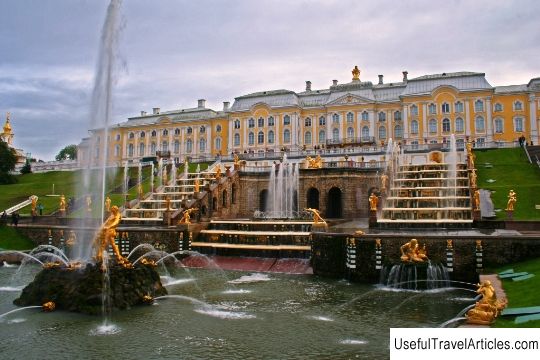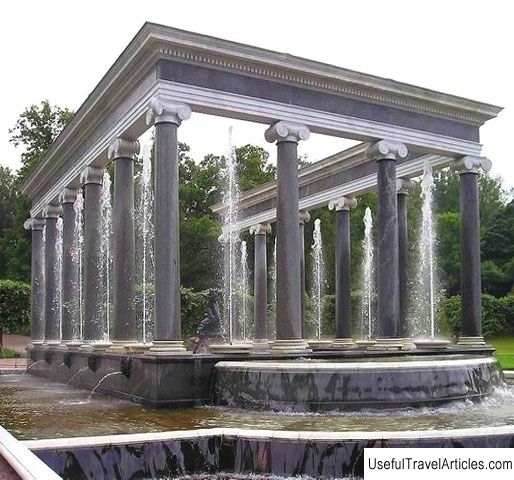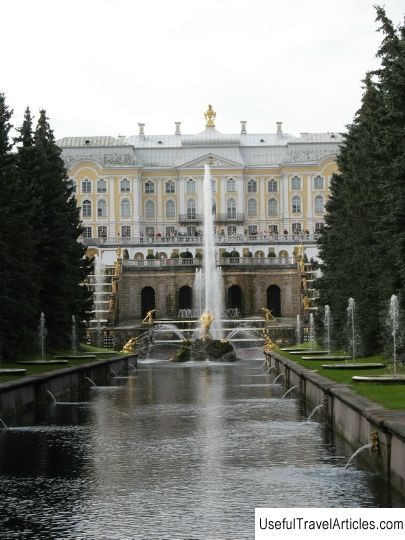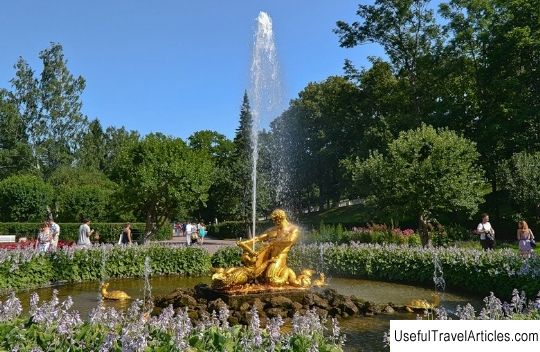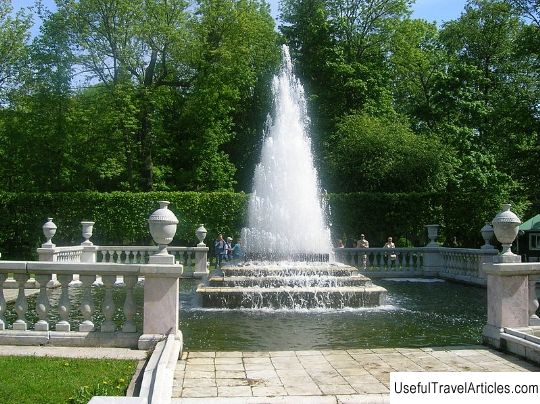Samson fountain description and photo - Russia - St. Petersburg: Peterhof
Rating: 8,2/10 (890 votes) 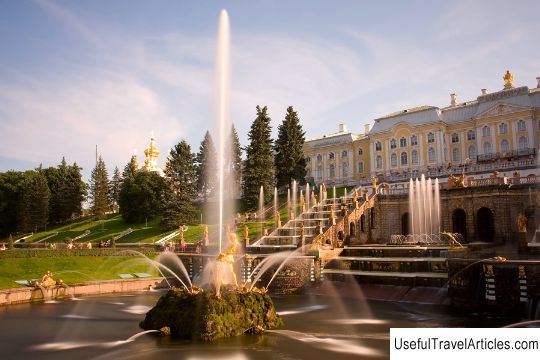
Samson fountain description and photos - Russia - St. Petersburg: Peterhof. Detailed information about the attraction. Description, photos and a map showing the nearest significant objects. Photo and descriptionThe Samson fountain, whose full name sounds like “Samson tearing apart the lion's mouth,” is located in the central part of the Grand Cascade basin in the Lower Park. On a 3-meter granite pedestal there is a statue of the biblical hero Samson fighting a lion, and an unusually high stream of water bursts out of the lion's mouth, torn apart by the hero. At the feet of the statues there are 8 gilded dolphins-fountains, and in 4 niches at the base of the pedestal water flows from 4 lion heads, which are the personification of 4 cardinal points. The Samson Fountain is the largest and most powerful fountain of the Grand Cascade. The jet of water from his water cannon reaches a height of almost 21 meters. The Samson fountain appeared in Peterhof in 1735 in honor of the 25th anniversary of the victory of the Russian troops over the Swedish in the Poltava battle. The choice of the subject for the composition of the monument was not accidental. During the Northern War, the image of a lion on the Swedish coat of arms was a symbol of the enemy, and the Battle of Poltava took place on June 27, 1709, on the day of St. Sampson. It is for this reason that the biblical Samson, victorious over the lion, could most fully and artistically describe the victory of Russia over Sweden. Initially, the sculpture was made of lead. The model was developed by the sculptor B. Rastrelli. The idea of the pedestal, according to some sources, belonged to the architect M. Zemtsov. In 1802, the lead sculpture, which had considerably swollen, was replaced with a bronze one. It was cast according to the model of M. Kozlovsky. Architect A. Voronikhin created a new pedestal with semicircular niches. They contained gilded lion heads made by the sculptor M. Dumnin. During the Great Patriotic War, the Germans stole the statue of Samson. There is a version that bronze was used for military purposes. At the end of December 2010, the statue was dismantled and sent for restoration, and in April 2011 it was returned to its place. There is a legend that Samson was not built in 1735, but 10 years earlier - back in 1725, during the life of Catherine I, who, as it were, expressed a desire, as soon as she ascended the throne, to perpetuate the victory of Russia in the Battle of Poltava with an allegorical image of Samson killing a lion. Other legends tell that, allegedly, the fountain was built at all under Peter the Great, who dedicated Samson to the great victory of the Russian fleet at Gangut.             We also recommend reading Spaso-Borodinsky monastery description and photos - Russia - Moscow region: Mozhaisky district Topic: Samson fountain description and photo - Russia - St. Petersburg: Peterhof. |
